One should not be deceived by the youthful appearance: Sandro Faïta has already had a 20-year career as a professional horn player in France, Ticino and Belgium. Health problems forced him to take a longer break a good ten years ago; after that he did not want to return to the classical orchestra. Instead, he did an apprenticeship as a carpenter and got into alphorn making. He runs the company résonance bois together with his business partner, who is a workshop master and takes care of the furniture and interior design. Sandro’s focus is on the instruments – primarily the alphorns, but also other wind instruments such as the serpent. During my visit, he showed me a didgeridoo whose complex scale (concave and cylindrical sections) he has been tinkering with for three years. He has also not completely given up making music: With the formation Cors de Lyon he is part of the very active French alphorn scene. And when he blows his horns, he produces a very present sound that contrasts wonderfully with his otherwise modest and quiet manner.
On his way to becoming an alphorn maker, Gérald Pot played an important role. Gérald provided him with the template on the basis of which Sandro built his first prototypes. He has remained faithful to the large bore. But he experimented for three more years until he found his own interpretation of the alphorn. Its core idea is a long cup made of one piece. He consistently relies on a swing foot, the idea of which he copied from Roger “Zaneth” Zanetti. Even today, he continues to develop his instrument. He has conducted a series of experiments on the vibration behavior of different materials and now builds his barrels from a shell-based composite material that has similar properties to animal horn.
Sandro’s horns have their own modern design language. This is especially true of the “flamed” model. Sandro acknowledges that this was originally a makeshift solution (he couldn’t initially find wood of the necessary thickness), and that gluing two pieces of wood together is probably suboptimal from an instrument acoustics perspective. However, the effect should be marginal at most and is outweighed by the decidedly elegant look. Also striking is the curved bore, which gives the outside of the tube a shape finely reminiscent of a violin.
In manufacturing, Sandro also made the move to CNC a few years ago. The changeover took a lot of time and forced him to revise his plans again. When using the composite materials, he has already made experiments with 3D printing. The procedure for interior painting is also special: Sandro paints each of the tube halves before gluing them together, thus obtaining a perfect painted surface in the tube. The wood of résonance bois comes mainly from the French Jura / Haut Doubs, partly also from Switzerland (Bois du Risoux). Sandro emphasizes that finding a sawmill that meets the specific needs of an alphorn maker is a real challenge.
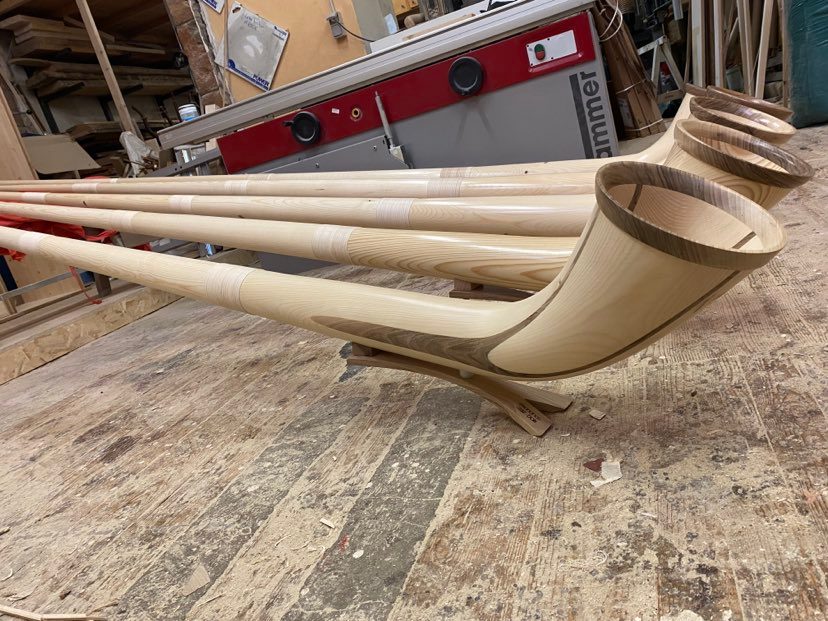
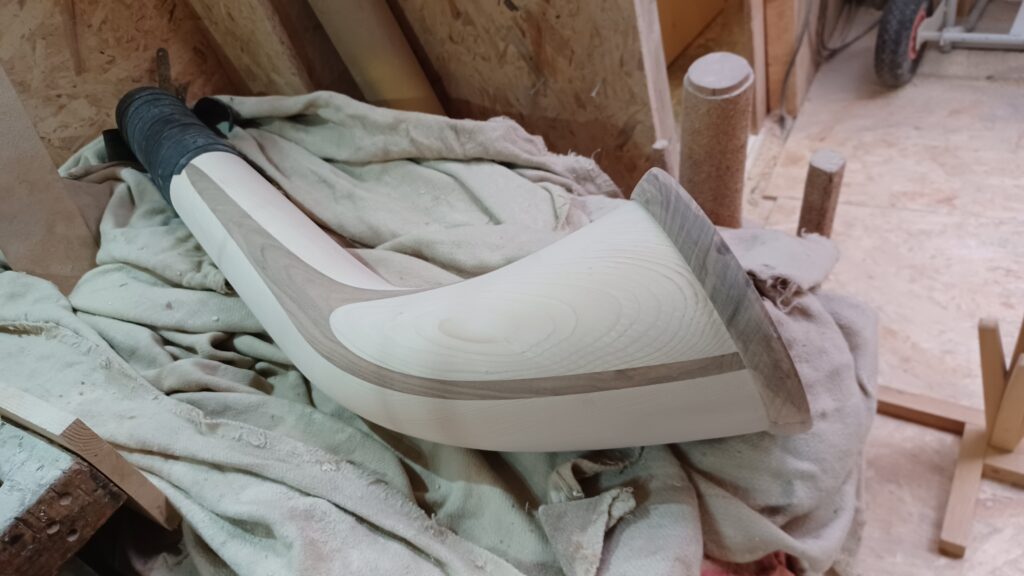
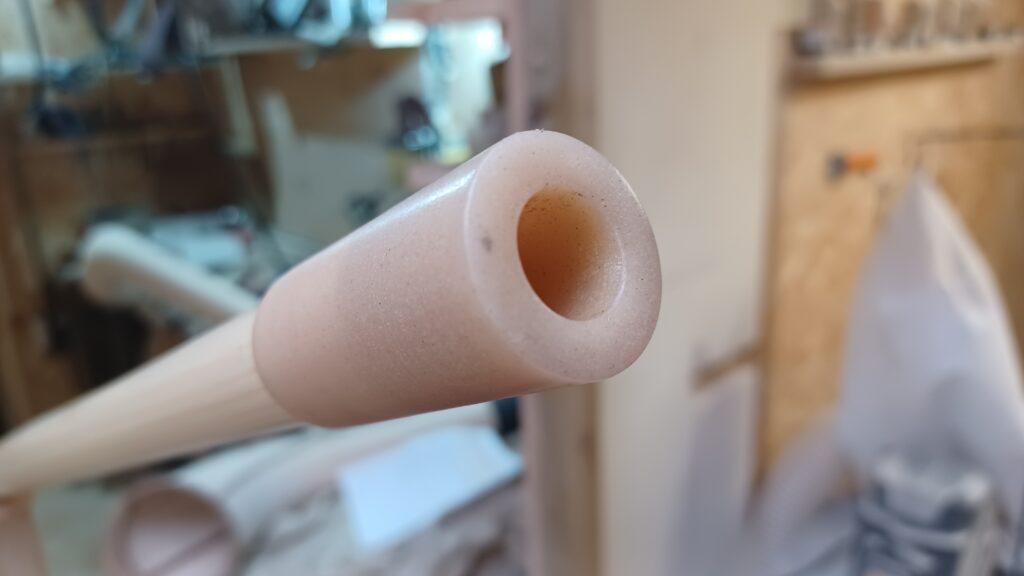
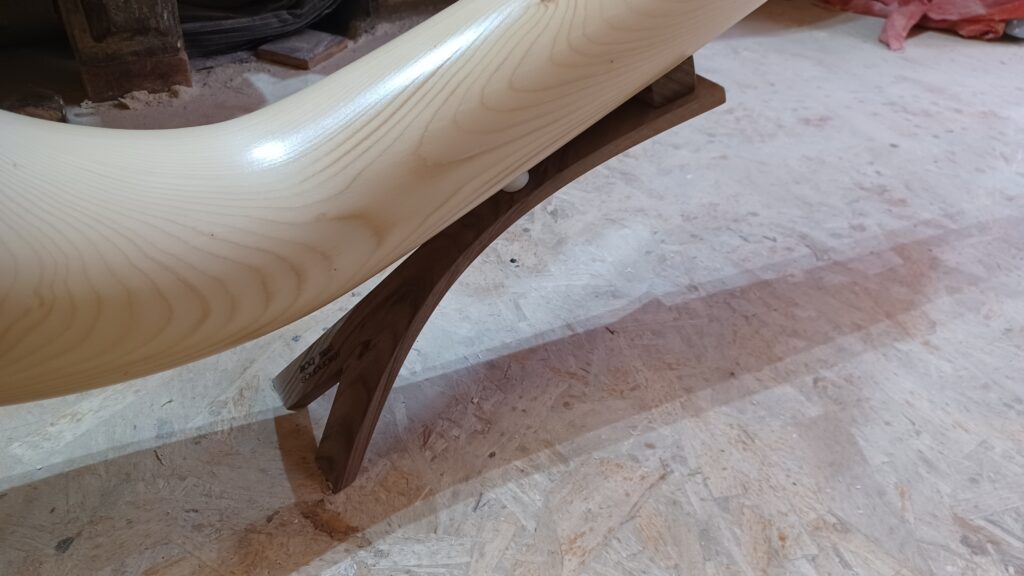
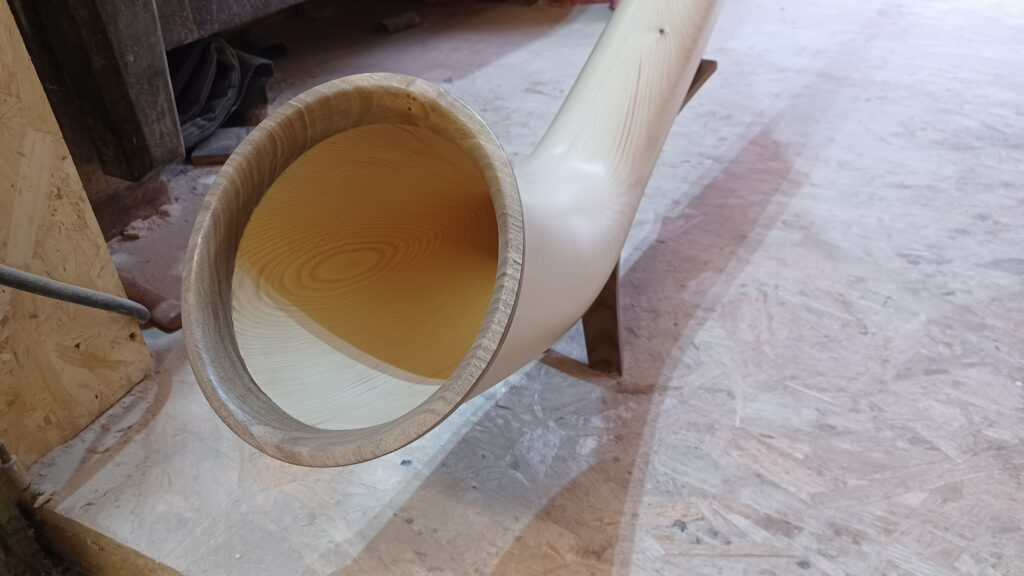
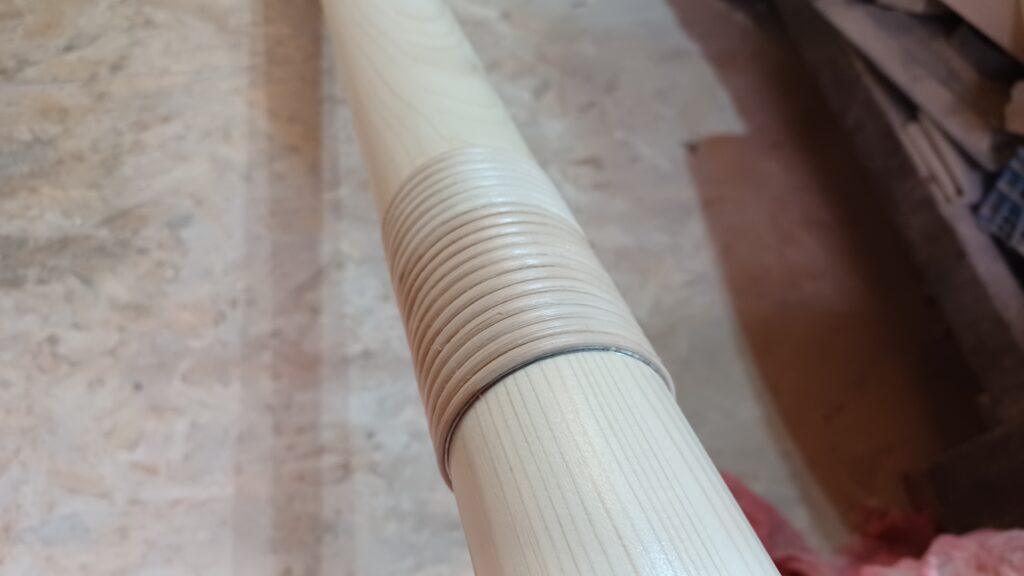
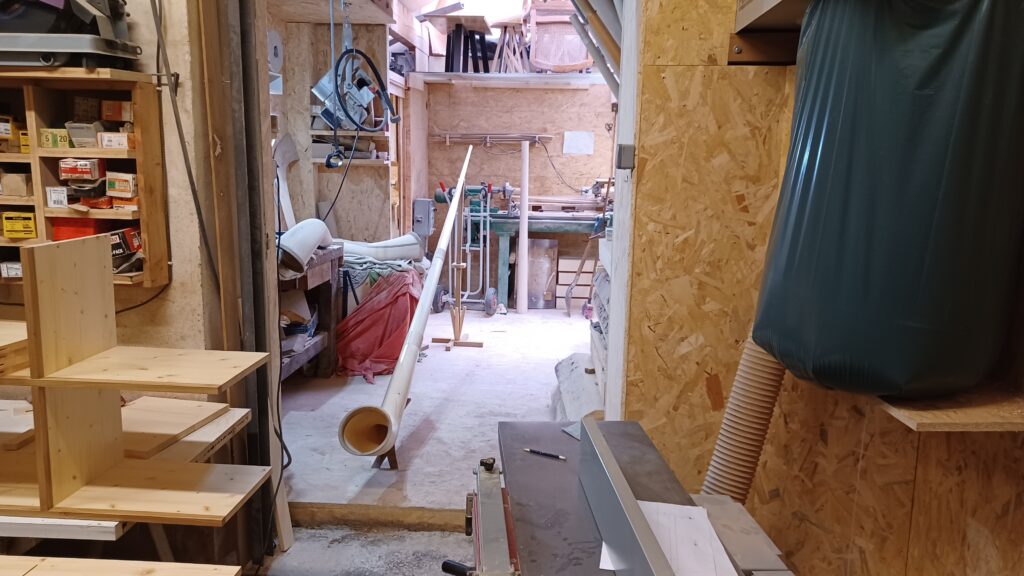
I was allowed to try out one of his instruments with a hand tube in F# in the workshop of résonance bois, in the middle of Lyon. Sandro builds unwound horns (only the bushings of the model I played were wrapped with pedigree). However, with a wall thickness of 7-8mm, they are not thin-walled, and due to the large scale length, the alphorn has a relatively large mass. It still reacts very easily during games. I positively noticed brilliance and precision – an ideal horn for classical music. Perhaps a little less suitable for playing soft and wide. The response is above average over the entire range. The dynamics can be varied very well. The intonation is also problem-free. Even in the very high range up to c”’ and beyond, the horn still sounds clean.
Many of Sandro’s clients are professional horn players from the French-speaking world – France, Belgium, and more recently Canada (Quebec – where alphorns are blown at Christmas). An important brand ambassador is the French alphorn player Alexandre Jous. Sandro also has a customer base in Switzerland through the festival in Nendaz.
Sandro built series of 4 each and takes about a month. The waiting time is about 1-3 months from order. The price around 3000 EUR (including French VAT) already includes handpipes in F & F#, a bag and mouthpiece. Sandro points out that in the French market it is difficult to get instruments to customers at a higher price. Photos and more information about the alphorns of résonance bois can be found on the website and on Facebook. Below are a few impressions from my visit in May 2023.
Conclusion: A modern alphorn with an excellent price-performance ratio, from a classical musician who has found happiness in his craft.
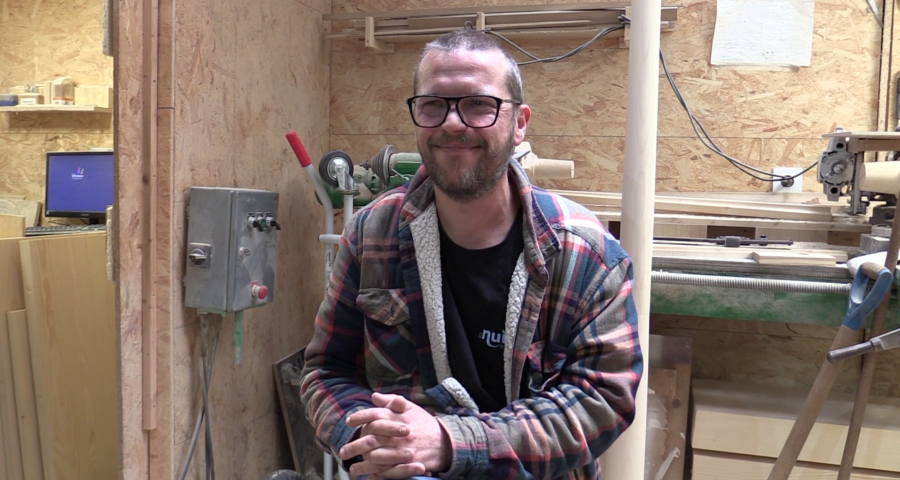
Leave a Reply